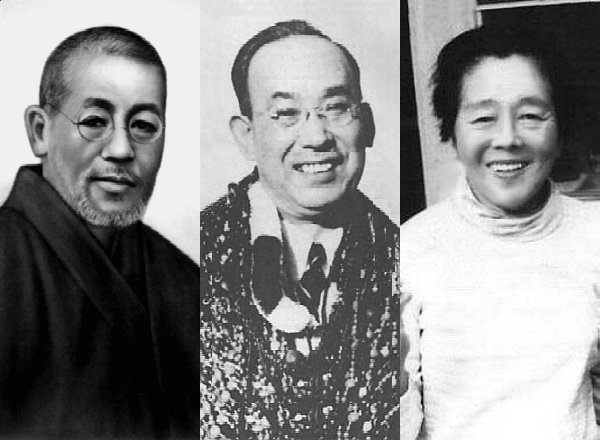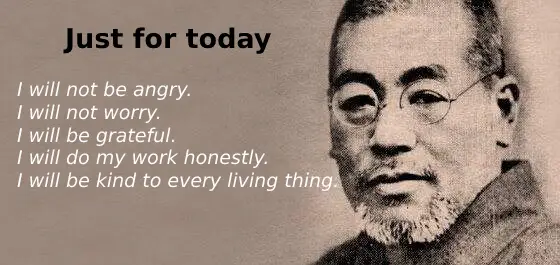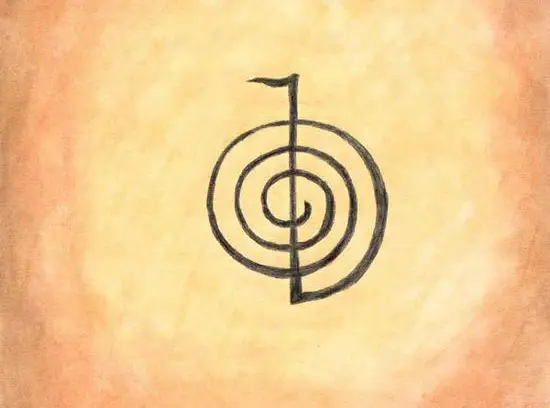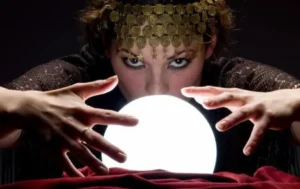Mikao Usui, a luminary figure from Japan’s early 20th century, remains an emblematic presence in the realm of alternative healing and spiritual practices. His name resonates with reverence among millions, not just as the founder of the Reiki system but as a visionary who melded ancient spiritual insights with contemporary therapeutic techniques.
Biography – Who was Mikao Usui?
Mikao Usui (1865-1926) stands out prominently in the annals of alternative healing methods as the founder of the Reiki system of healing. Born in the Gifu prefecture of Japan, Usui’s lifelong journey was marked by his deep quest for spiritual and therapeutic knowledge.
Early Life and Education
Usui’s early life was characterized by a series of pursuits in various disciplines ranging from history and medicine to psychology and theology. Contrary to popular myths that he was a Christian minister, there is no historical evidence to substantiate such claims. In fact, most reliable sources suggest that he was primarily a lay Tendai Buddhist. Nonetheless, it was his eclectic education that later paved the way for his holistic understanding of health and wellness.
Rediscovery of Reiki
The culmination of Usui’s spiritual quest occurred following a period of meditation on Mount Kurama, a sacred location near Kyoto. Here, he purportedly experienced a profound mystical revelation that equipped him with the symbols and methods necessary for Reiki—an energy healing technique. This system, which the Western world often understands as a form of “laying on of hands,” revolves around the premise that there is a universal life force energy. Practitioners believe that by channeling this energy, one can instigate healing, both for oneself and for others.
The Usui Reiki System
Upon his momentous experience, Usui initiated the systematization and teaching of Reiki, devising a set of principles now referred to as the “Five Reiki Principles” or “Five Reiki Precepts.” These underline the holistic approach of Reiki that combines physical healing with mental and spiritual well-being:
- Just for today, I will not be angry.
- Just for today, I will not worry.
- Just for today, I will be grateful.
- Just for today, I will do my work honestly.
- Just for today, I will be kind to every living thing.
These principles, akin to ethical guidelines, reflect the depth and breadth of Usui’s vision, demonstrating that Reiki was not just about healing physical ailments but about fostering a life rooted in peace, gratitude and compassion.
Legacy and Continuation
Mikao Usui’s passing in 1926 did not mark the end of his teachings. Dr. Chujiro Hayashi, one of his foremost students, played a pivotal role in the continuation and dissemination of Reiki, notably initiating Hawayo Takata, the woman credited with introducing Reiki to the Western world. This cross-continental expansion has since led to a proliferation of various Reiki traditions and schools.
How did Mikao Usui discover Reiki?
Historically, Usui was known to have pursued knowledge in various fields, including medicine, psychology, and spirituality. His eclectic interests and inherent spiritual inclinations set the stage for the profound experiences that would lead to the inception of Reiki.
The pivotal event took place during a meditative retreat on Mount Kurama. Usui, driven by a desire for enlightenment and a deeper understanding of healing, undertook a rigorous practice known as ‘misogi’, which involves fasting, meditating and chanting. The culmination of this practice was a 21-day retreat on the mountain, during which he sought to attain a heightened state of spiritual clarity.
Towards the end of this period, Usui reportedly experienced a significant mystical revelation. He described a powerful light entering the top of his head, which illuminated his consciousness and provided him with the insights into the symbols and methods that would become the foundational elements of Reiki. This profound experience not only provided Usui with the tools and techniques for healing but also ignited a sense of purpose in him.
Following this transformative experience, Usui began treating and healing people in Kyoto, initially focusing on beggars and the marginalized. Observing the recurring patterns of poverty and illness, he integrated ethical guidelines into his teachings, emphasizing personal responsibility and spiritual growth. These guidelines are now recognized as the Five Reiki Principles or Precepts.
Subsequently, Usui formalized his teachings and insights into a structured system, which he named Reiki, a compound of the Japanese words ‘Rei’ (universal) and ‘Ki’ (life force energy). His system integrated the therapeutic application of the universal life force energy with ethical principles, ensuring holistic healing that encompassed the physical, mental and spiritual dimensions.
How Reiki spread around the world
Reiki has over the last century transcended its cultural origins to become a global phenomenon. The dissemination of Reiki from a localized practice to an internationally recognized system is an intricate tapestry of historical events, influential personalities, and the universal appeal of its principles.
The inception by Mikao Usui: The story begins with Mikao Usui’s revelatory experience on Mount Kurama near Kyoto, Japan, in the early 20th century. Usui’s subsequent formulation of the Reiki system, with its foundational principles and techniques, marked the birth of what would later become a worldwide movement.
Dr. Chujiro Hayashi’s role: Dr. Chujiro Hayashi, a retired naval officer and one of Usui’s prominent students, played a critical role in systematizing and spreading the Reiki method. He established a clinic in Tokyo where treatments were offered and where he further trained students in the Reiki method.
Hawayo Takata’s introduction to Reiki: The global proliferation of Reiki can be significantly attributed to Mrs. Hawayo Takata, a Hawaiian of Japanese descent. In the 1930s, while seeking medical treatment in Japan, Takata encountered Reiki at Hayashi’s clinic. After experiencing personal healing, she learned the practice under Hayashi’s tutelage and subsequently introduced it to Hawaii.
Reiki’s expansion in the West: Upon her return to Hawaii, Takata commenced her practice and began teaching Reiki. Over the years, she trained 22 Reiki Masters, facilitating the establishment of Reiki practices across the United States. As these practitioners began teaching in their own right, the influence of Reiki radiated outwards, reaching Canada, Europe, and beyond.
Variations and evolution: As Reiki permeated diverse cultures and traditions, it inevitably underwent adaptations. Different lineages and schools emerged, each interpreting and teaching Reiki in ways that resonated with their contexts. This led to the development of numerous Reiki traditions worldwide, such as Usui/Tibetan Reiki, Western Reiki, and Traditional Japanese Reiki, among others.
Modern dissemination: The latter half of the 20th century witnessed an increased interest in alternative therapies in the West. Coupled with global travel and communication advancements, Reiki practitioners and teachers began hosting international workshops, publishing books, and utilizing the internet, further accelerating the global spread of Reiki.
Recognition and integration: By the turn of the 21st century, Reiki had not only gained popularity among individuals but also started to be recognized by certain medical communities. Hospitals in the U.S. and other parts of the world began offering Reiki as a complementary therapy, further cementing its global footprint.
The principles of Reiki as taught by Mikao Usui
The principles of Reiki, as taught by Mikao Usui, form an essential foundation for practitioners and serve as a moral compass to guide daily living. Rooted in a holistic worldview, these principles aim not only at physical healing but also at fostering spiritual growth, emotional well-being, and ethical conduct. Usui understood that true healing transcends the mere alleviation of physical symptoms and should encompass the entirety of human experience.
Central to Usui’s teachings are the “Five Reiki Principles” or “Five Reiki Precepts”. They are sometimes introduced with the phrase “Just for today” to emphasize mindfulness and the significance of the present moment. The principles are:
- Do not be angry. This precept underscores the importance of managing negative emotions. Anger, when unchecked, can have deleterious effects on the mind and body. By acknowledging and letting go of anger, one can achieve a state of calm and balance.
- Do not worry. Chronic worry can be debilitating and can hamper the body’s natural ability to heal. This principle encourages a mindset of trust and acceptance, reducing anxiety and promoting mental well-being.
- Be grateful. Gratitude is a powerful emotion that can shift one’s focus from what is lacking to what is abundant in life. By fostering a sense of gratitude, individuals can cultivate positivity and contentment.
- Work diligently. This principle does not merely pertain to professional endeavors but emphasizes the value of commitment, sincerity, and integrity in all aspects of life. Hard work and dedication, combined with right intentions, lead to growth and fulfillment.
- Be kind to others. At the heart of Reiki’s philosophy is compassion and empathy. This precept serves as a reminder to treat others with respect, understanding, and love, fostering harmonious relationships and promoting collective well-being.
These principles while seemingly straightforward hold profound depths of meaning. They serve as reminders that healing is a multifaceted journey, intricately interwoven with one’s moral choices, emotional resilience, and spiritual evolution. For Reiki practitioners and recipients alike, the principles provide a framework for introspection, self-improvement and purposeful living. They epitomize Mikao Usui’s vision of Reiki as a comprehensive system that harmonizes the physical, emotional and spiritual dimensions of human existence.
Meaning of Reiki symbols used by Mikao Usui
Reiki symbols are pivotal elements within the Reiki healing system. They function as keys or conduits, enabling the practitioner to access and channel specific frequencies of the universal life force energy. While the exact nature of Usui’s discovery and use of these symbols remains cloaked in a combination of historical documentation and spiritual lore, their significance within the Reiki practice is indisputable.
- Cho Ku Rei (The Power Symbol)
- Meaning: Often translated as “Place the power of the universe here,” this symbol is akin to a switch, amplifying the practitioner’s ability to channel Reiki energy.
- Function: It is employed to increase energy flow, provide protection, and cleanse negative energies. Often used at the beginning of sessions, it helps in grounding and focusing the energy.
- Sei Hei Ki (The Mental/Emotional Symbol)
- Meaning: While a direct translation is elusive, its essence pertains to harmony. The symbol represents a bridge between the left and right brain hemispheres, facilitating emotional and mental equilibrium.
- Function: This symbol is used to address emotional and mental distress, aiding in healing past traumas, improving memory recall, and alleviating emotional blockages.
- Hon Sha Ze Sho Nen (The Distance Symbol)
- Meaning: Often translated as “No past, no present, no future” or “The god (Buddha) in me contacts the god in you.” This symbol transcends the constraints of time and space.
- Function: It allows the practitioner to send Reiki energy across distances, be they spatial or temporal. This means Reiki can be directed to individuals in different locations or even to past or future events.
- Dai Ko Myo (The Master Symbol)
- Meaning: Translated as “Great shining light,” this symbol is representative of enlightenment and is the most potent symbol in the Usui Reiki system.
- Function: Reserved for Reiki masters, it encompasses the vibration of all other symbols, amplifying their effects. It’s used for attuning other practitioners and represents a direct link to the universal life force energy.
LotusBuddhas would like to remind you that while these symbols serve as focal points for channeling energy, they are not inherently “magical.” Their efficacy is derived from the intent and training of the practitioner. Furthermore, the true depth and nuances of these symbols are often revealed through consistent practice and experiential understanding. Traditional teachings emphasize that while knowledge of the symbols is essential, it’s the practitioner’s connection, intent, and relationship with the energy that determines the efficacy of the healing session.
Books by Mikao Usui
Unfortunately, Mikao Usui is not known to have authored extensive texts or books in the manner that contemporary authors do. Instead, his teachings and principles were primarily transmitted orally and through hands-on training, which was typical for many traditional practices in Japan during his time.
However, Usui did leave behind inscriptions and certain manuals for his students, which provided guidance on Reiki techniques, principles and practices. The most notable among these is the “Usui Reiki Ryōhō Hikkei” or the “Usui Reiki Healing Method Handbook.” This manual provided an overview of the Reiki system, elucidated its core principles, and offered guidance on its therapeutic techniques.
Within the “Usui Reiki Ryōhō Hikkei”, there are descriptions of the Reiki symbols, their uses, and the significance of the Five Reiki Principles or Precepts. Additionally, the manual contains anecdotal accounts and testimonials from those who experienced Reiki treatments, thus offering insights into the efficacy and impact of the practice.
It is essential to note that while the “Usui Reiki Ryōhō Hikkei” remains a foundational text for many Reiki practitioners, the majority of information about Usui and his teachings has been passed down through lineage bearers, notably Dr. Chujiro Hayashi and Hawayo Takata. This lineage-based transmission has led to the evolution of various Reiki traditions and interpretations worldwide.
In contemporary times, many authors and Reiki masters have written extensively about Mikao Usui and the Reiki system. These texts often combine historical research with personal experiences, aiming to provide a comprehensive understanding of Usui’s teachings. However, when seeking primary texts authored by Usui himself, the “Usui Reiki Ryōhō Hikkei” remains the central reference.
Reference more: What is Reiki Meditation? Techniques and Benefits











